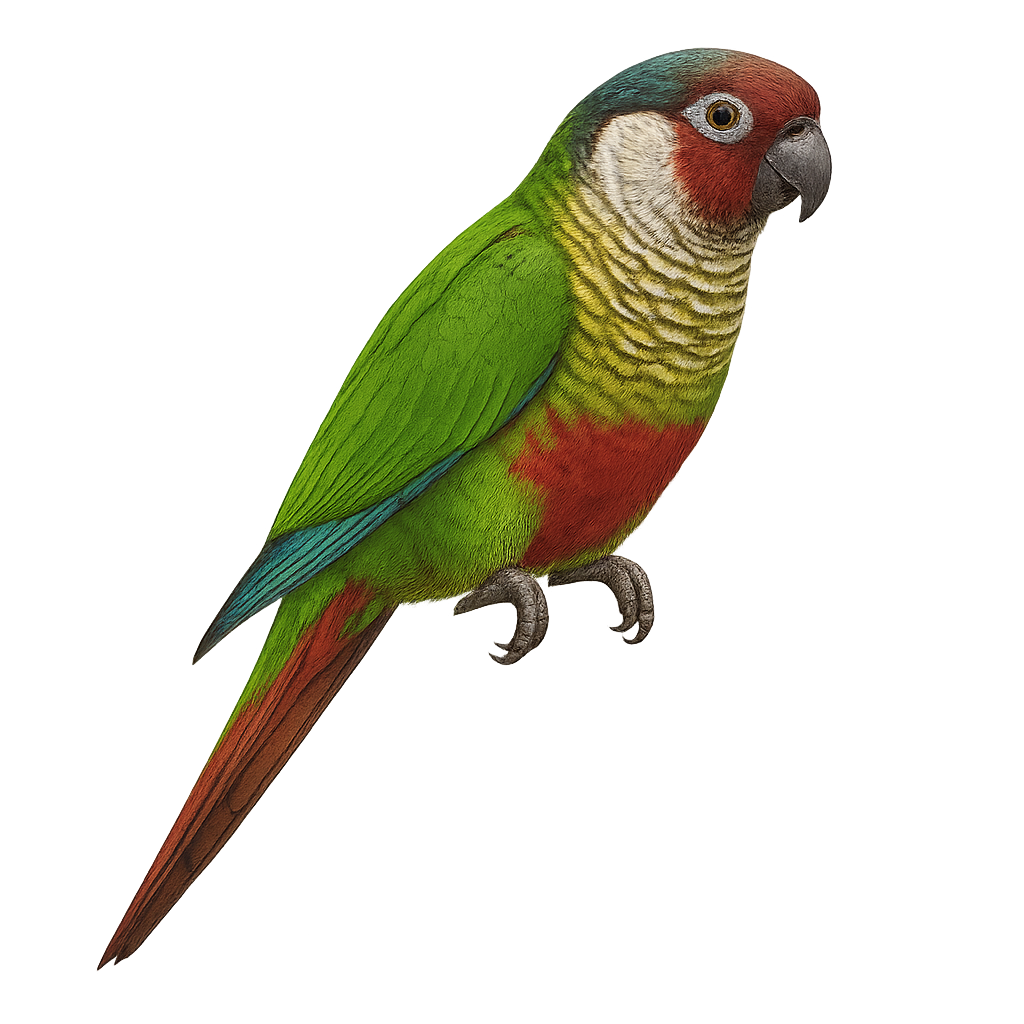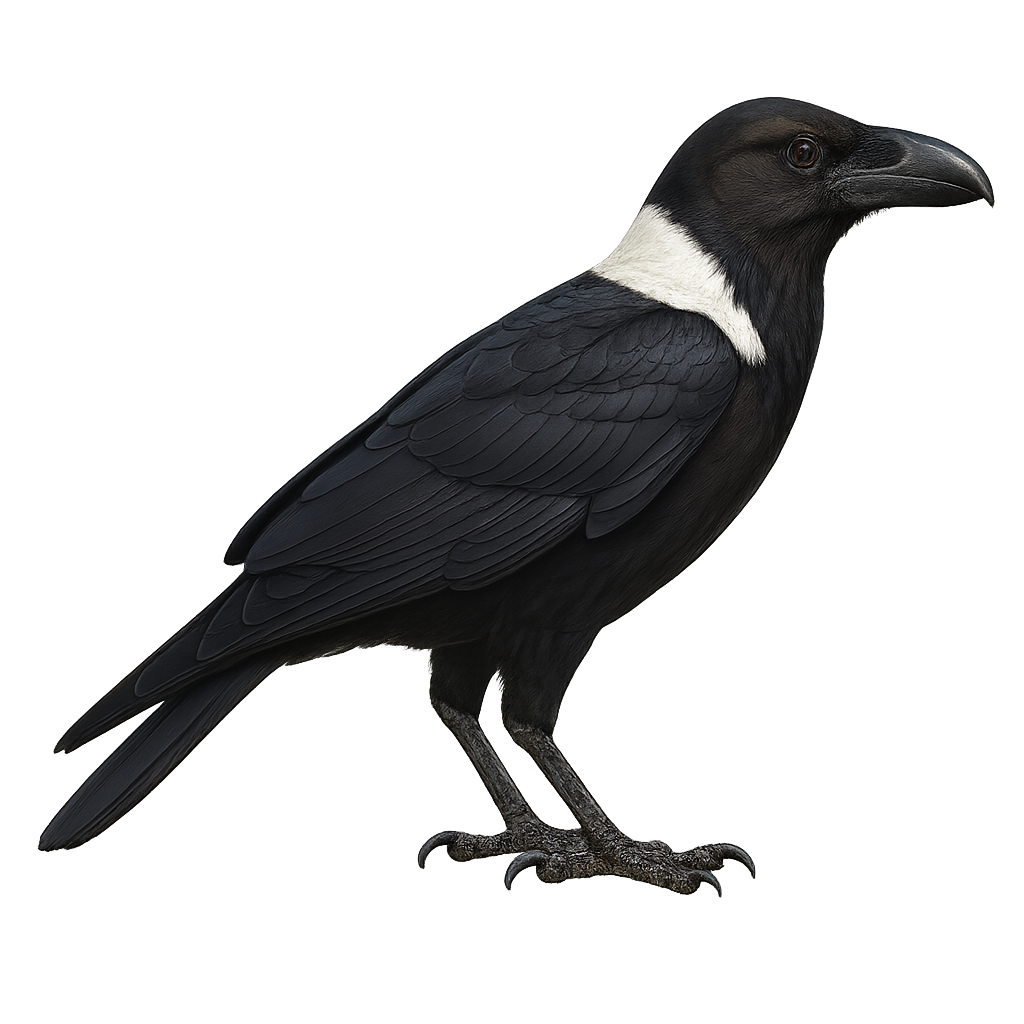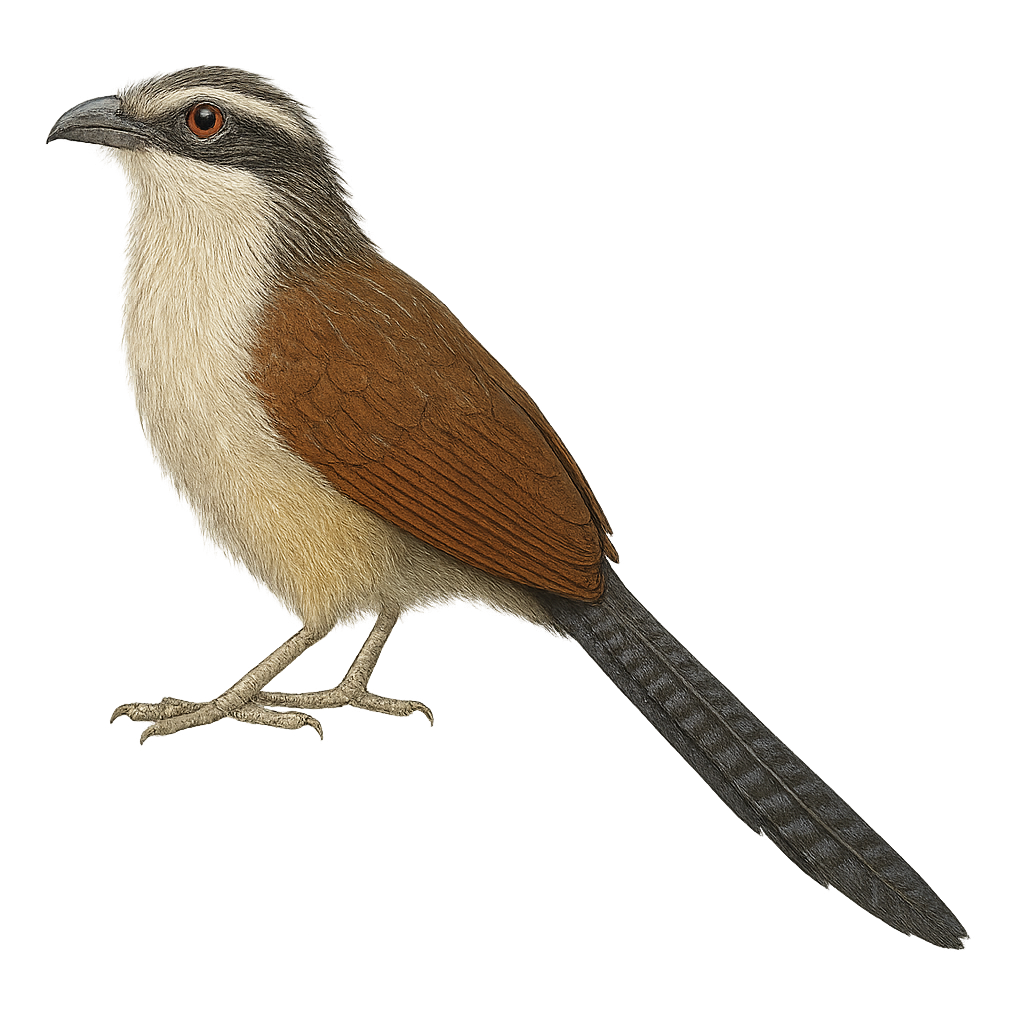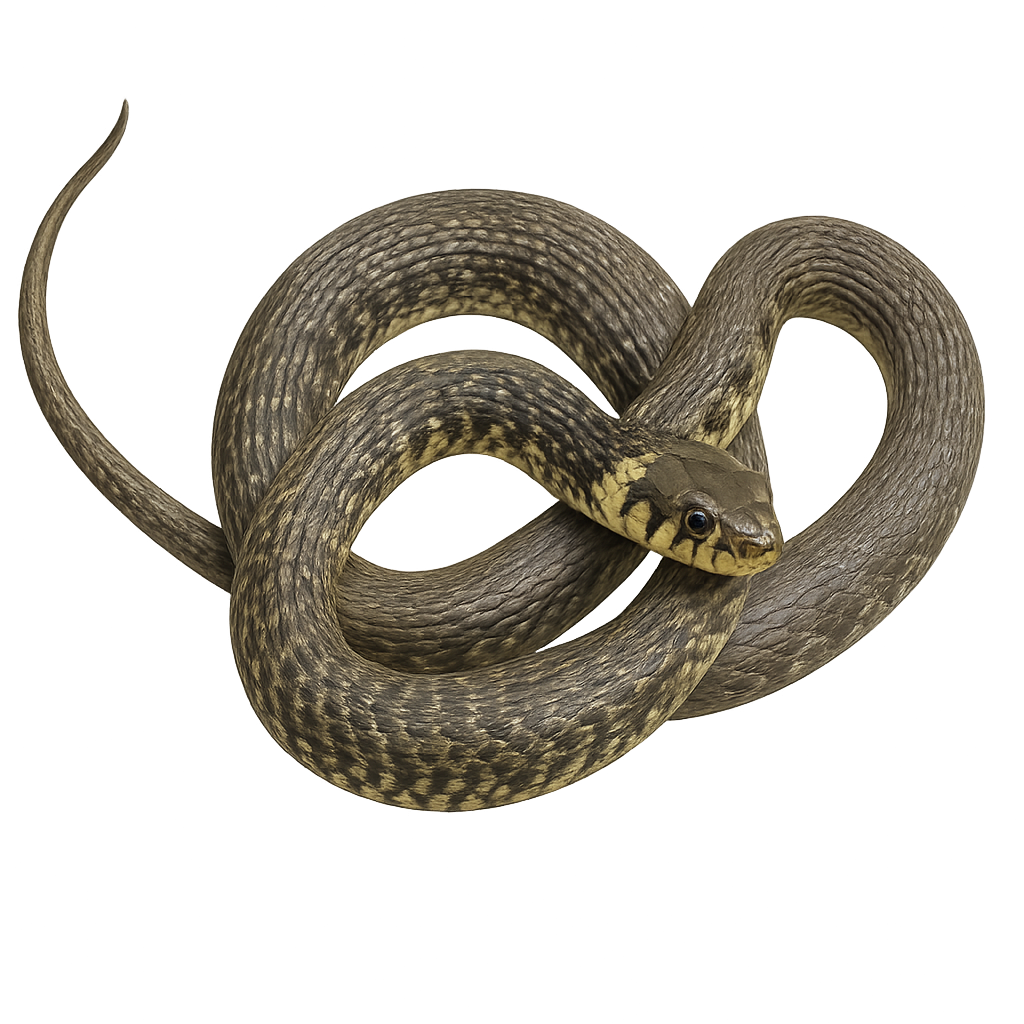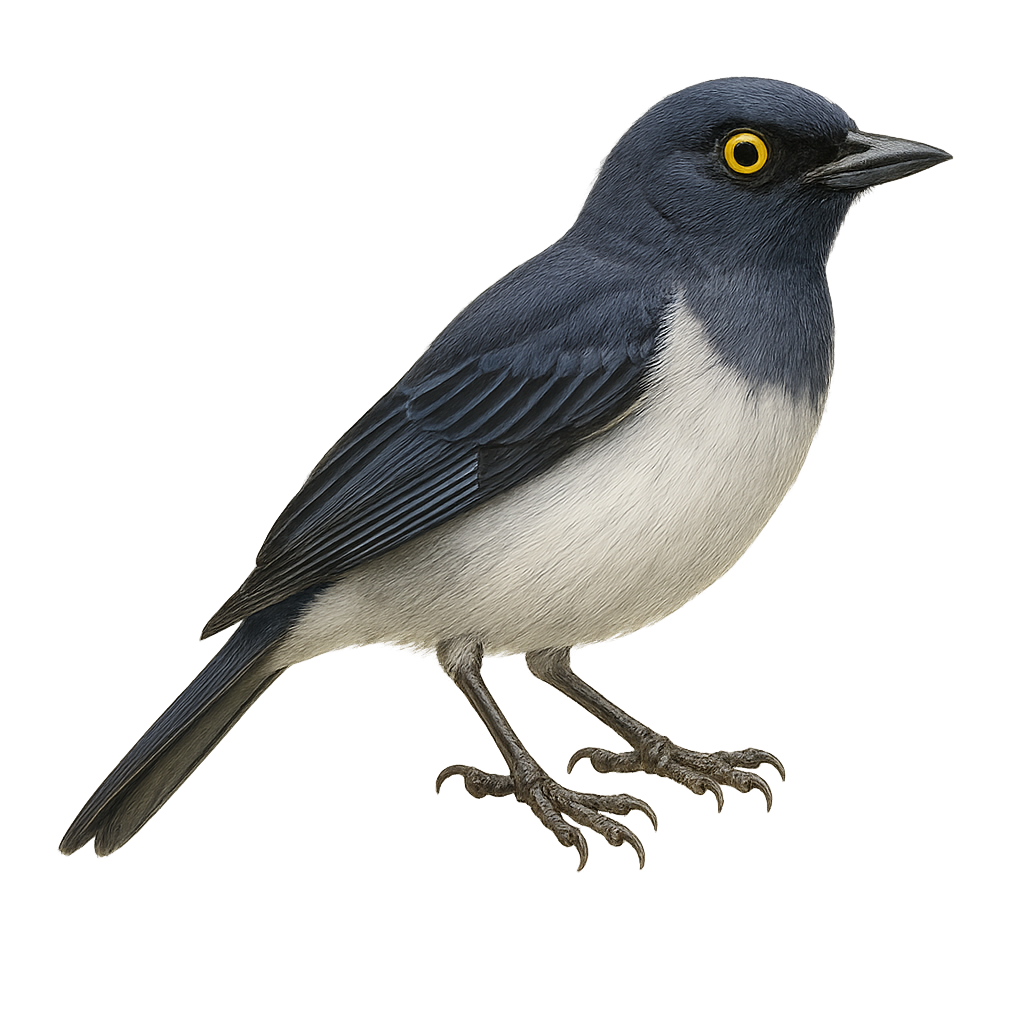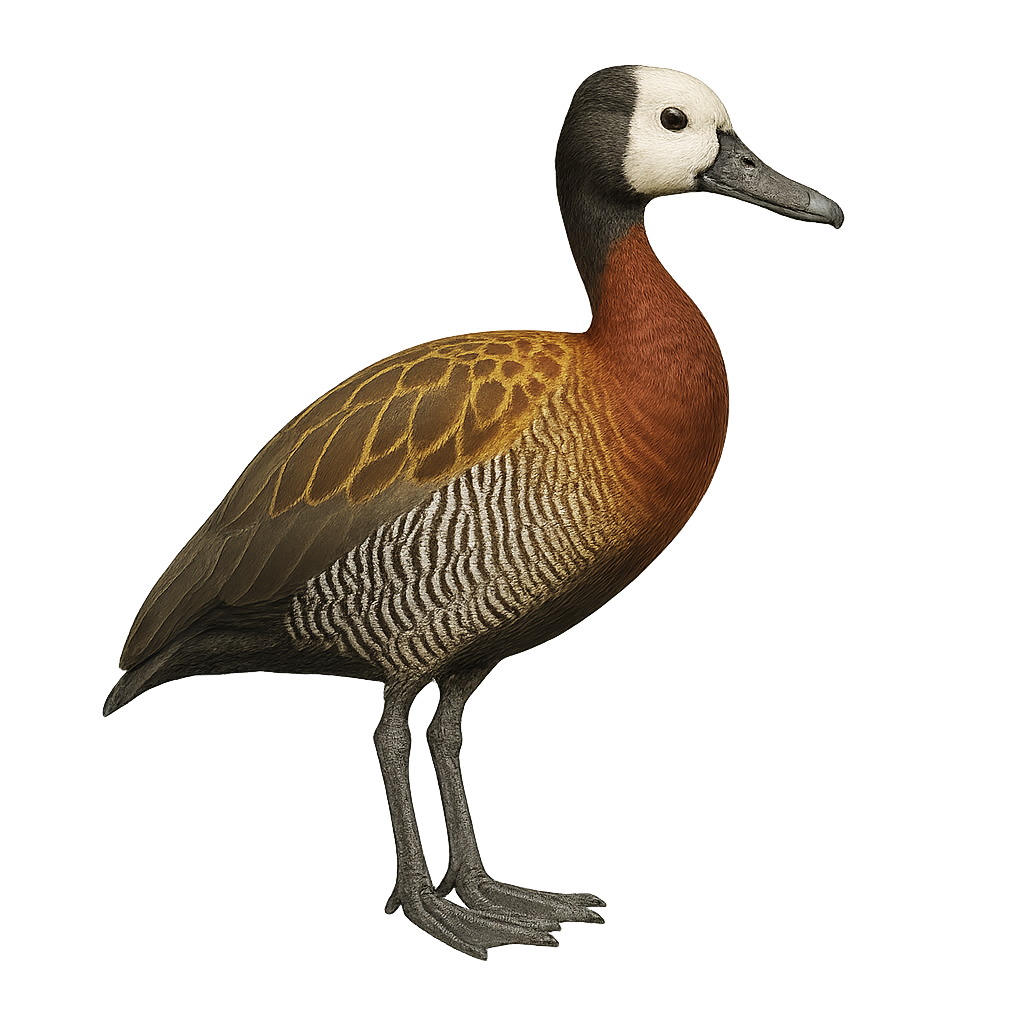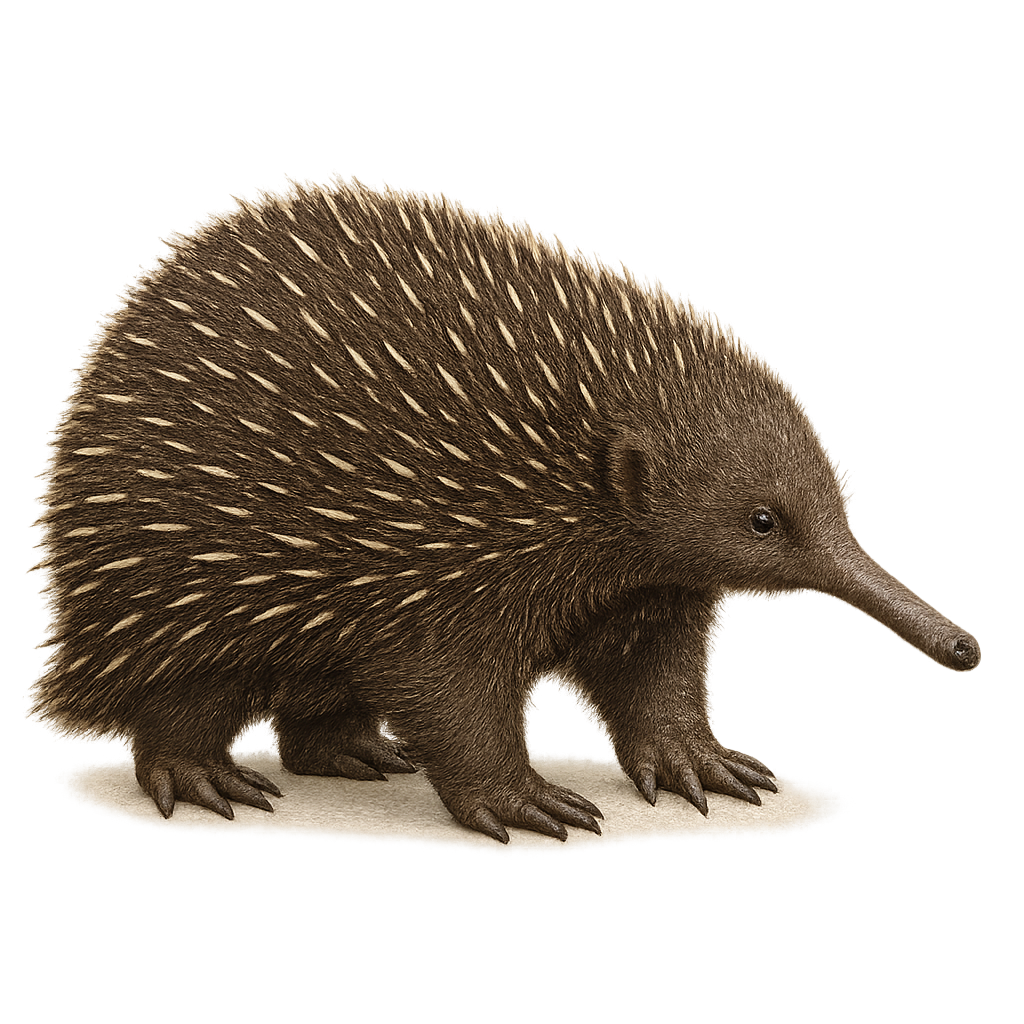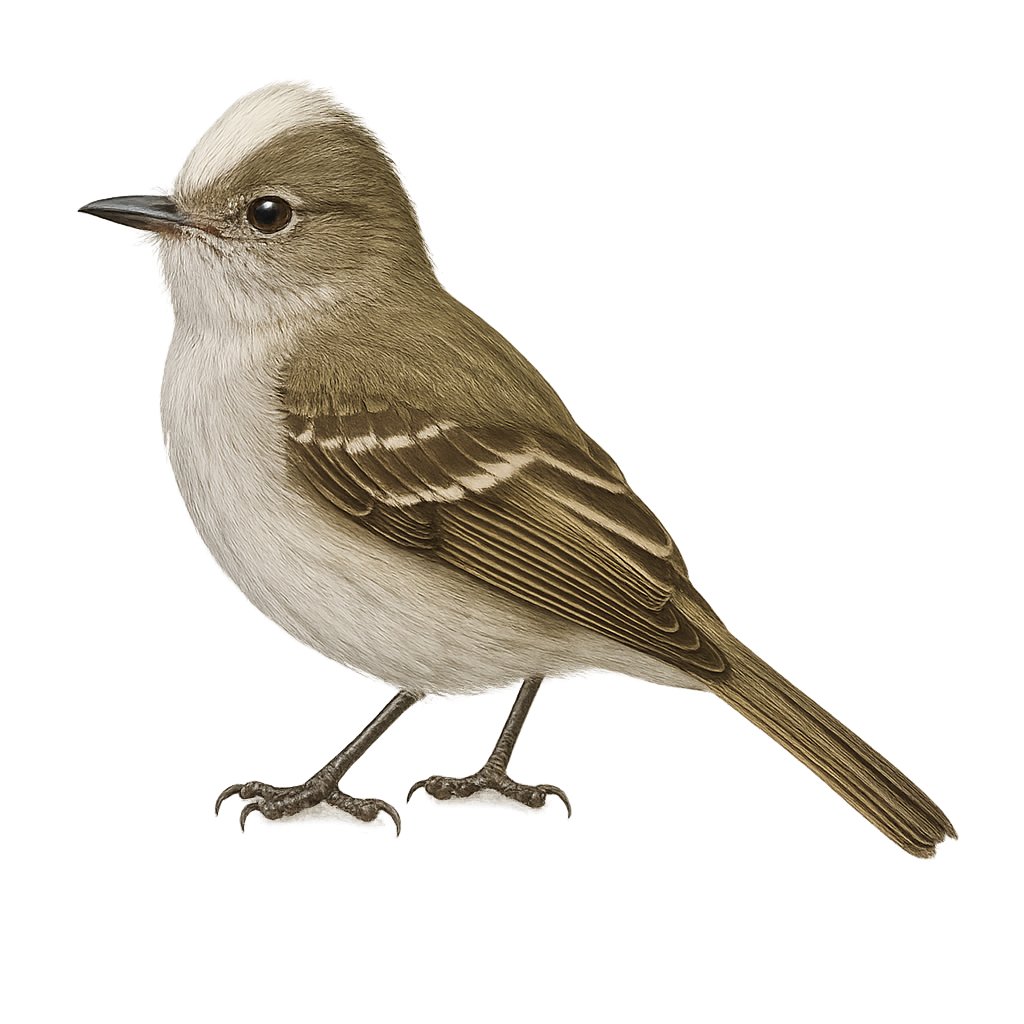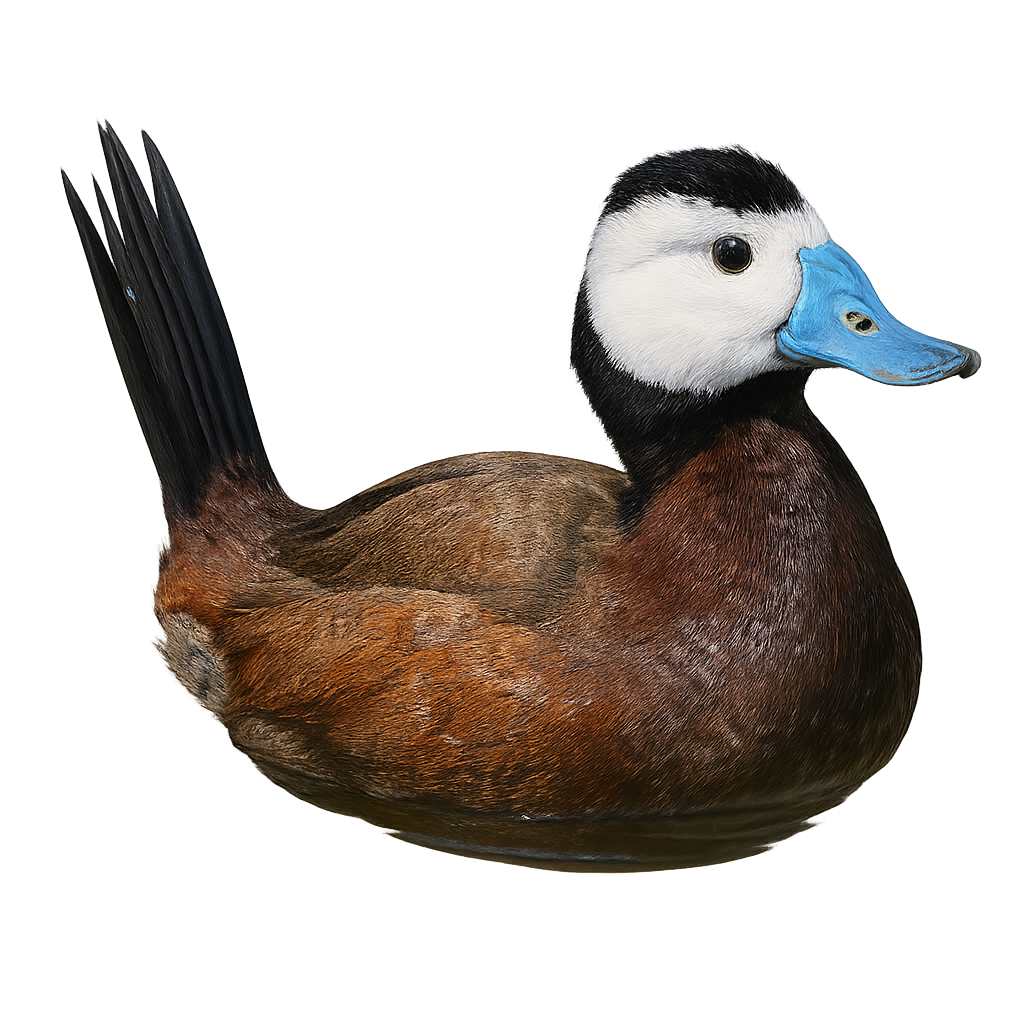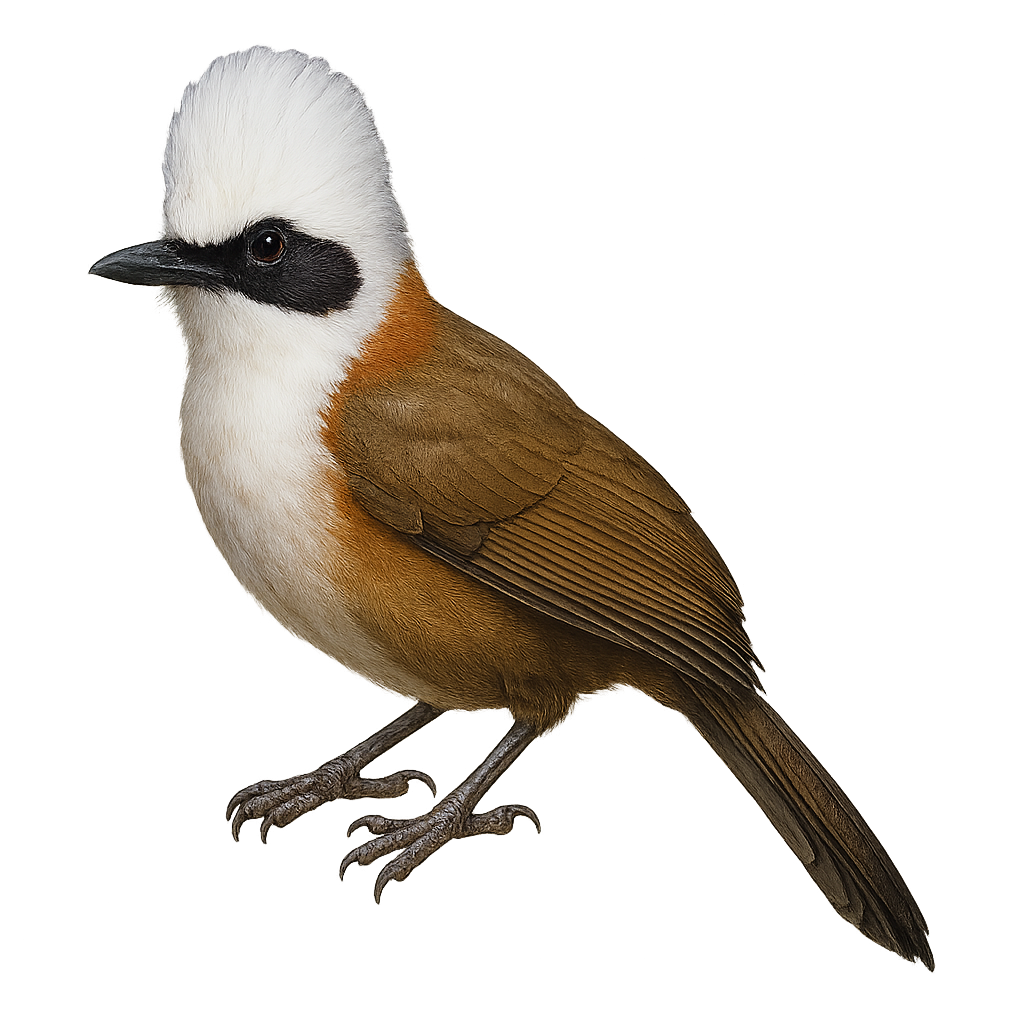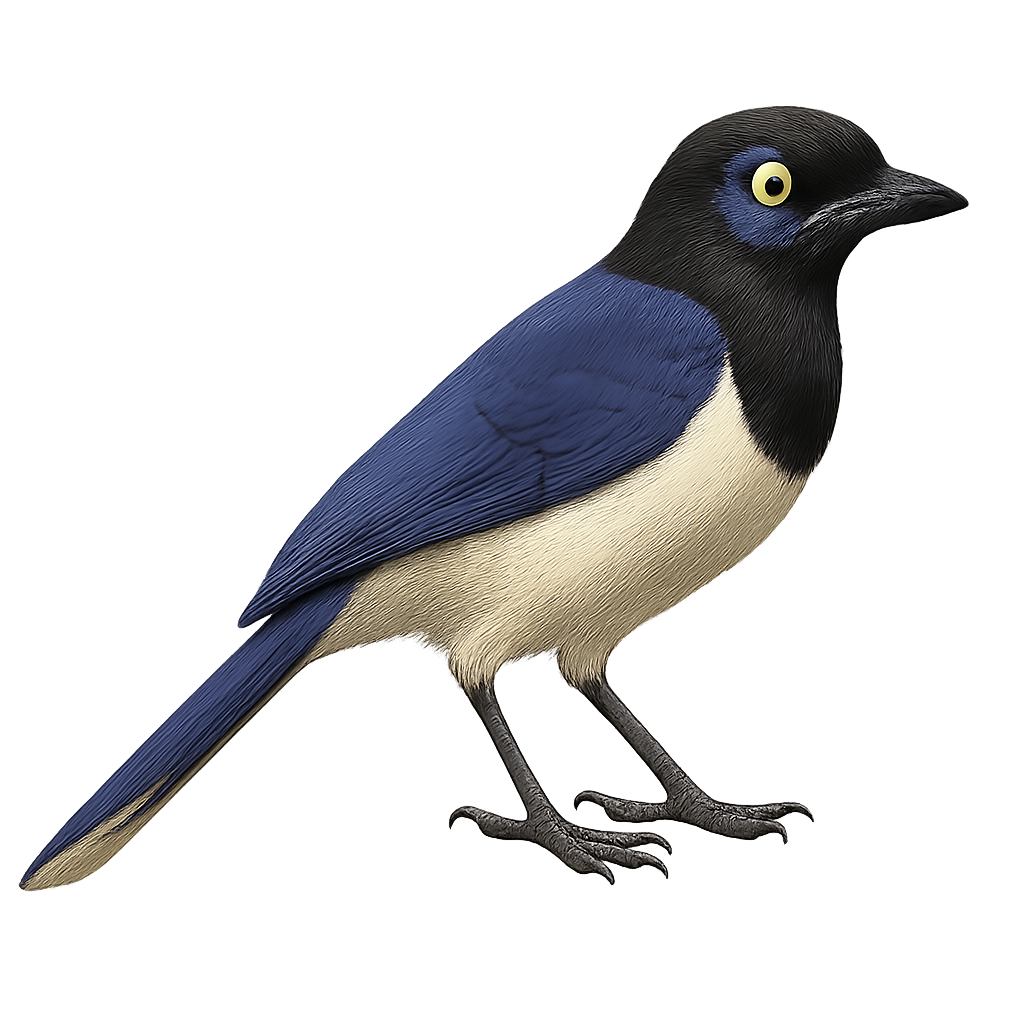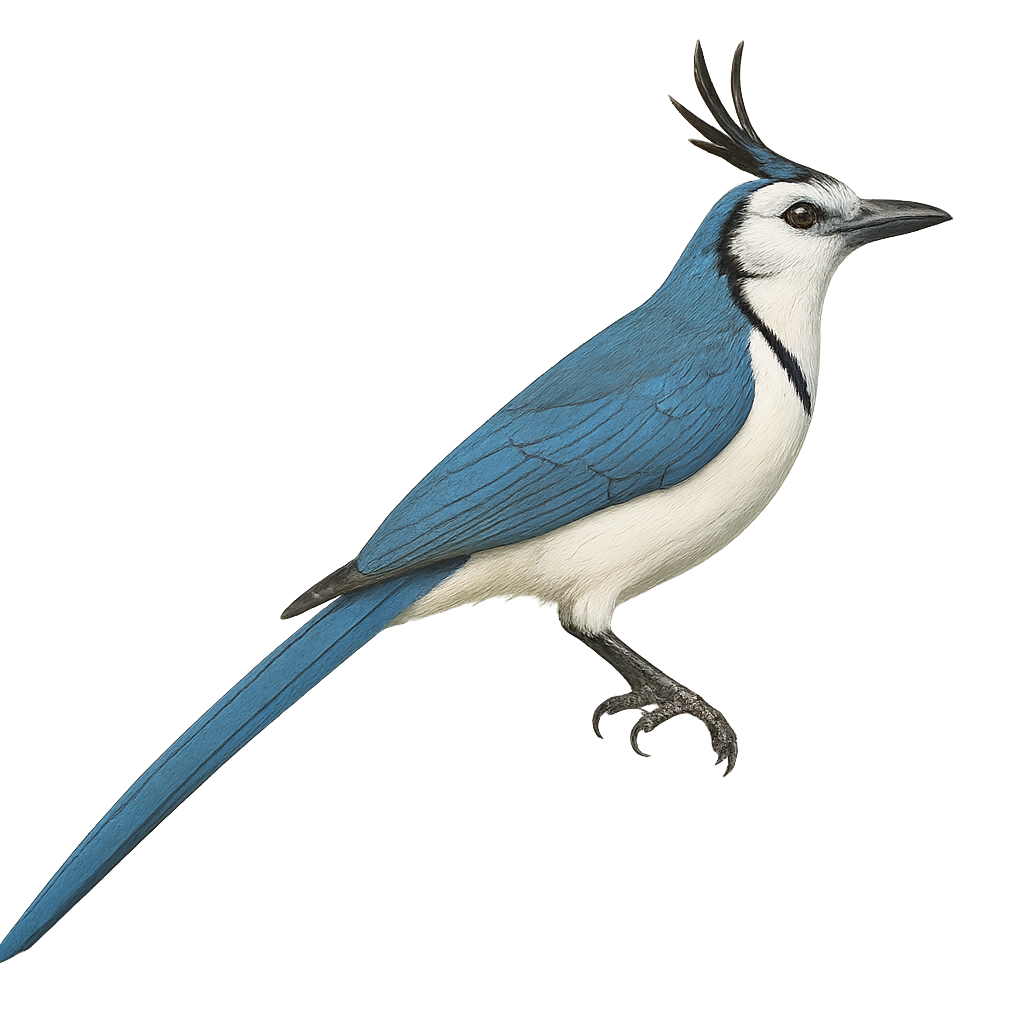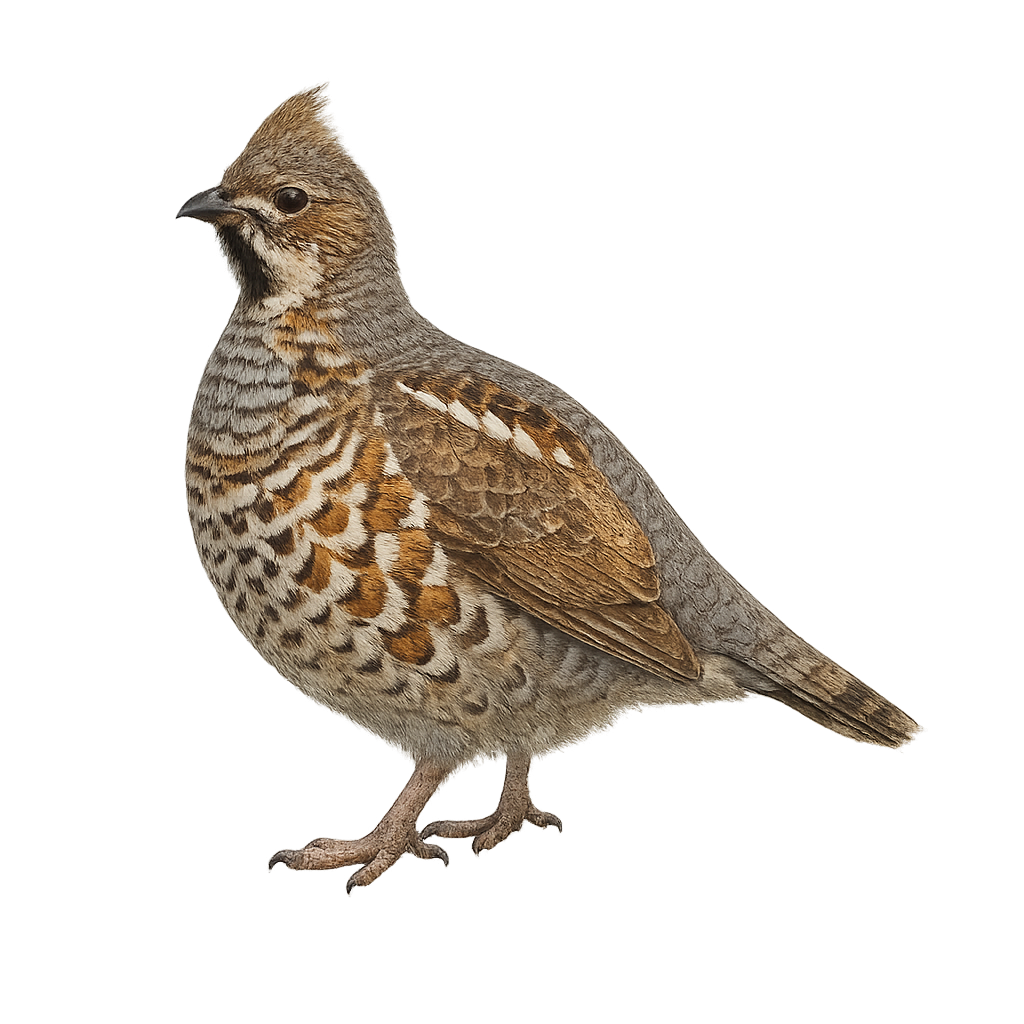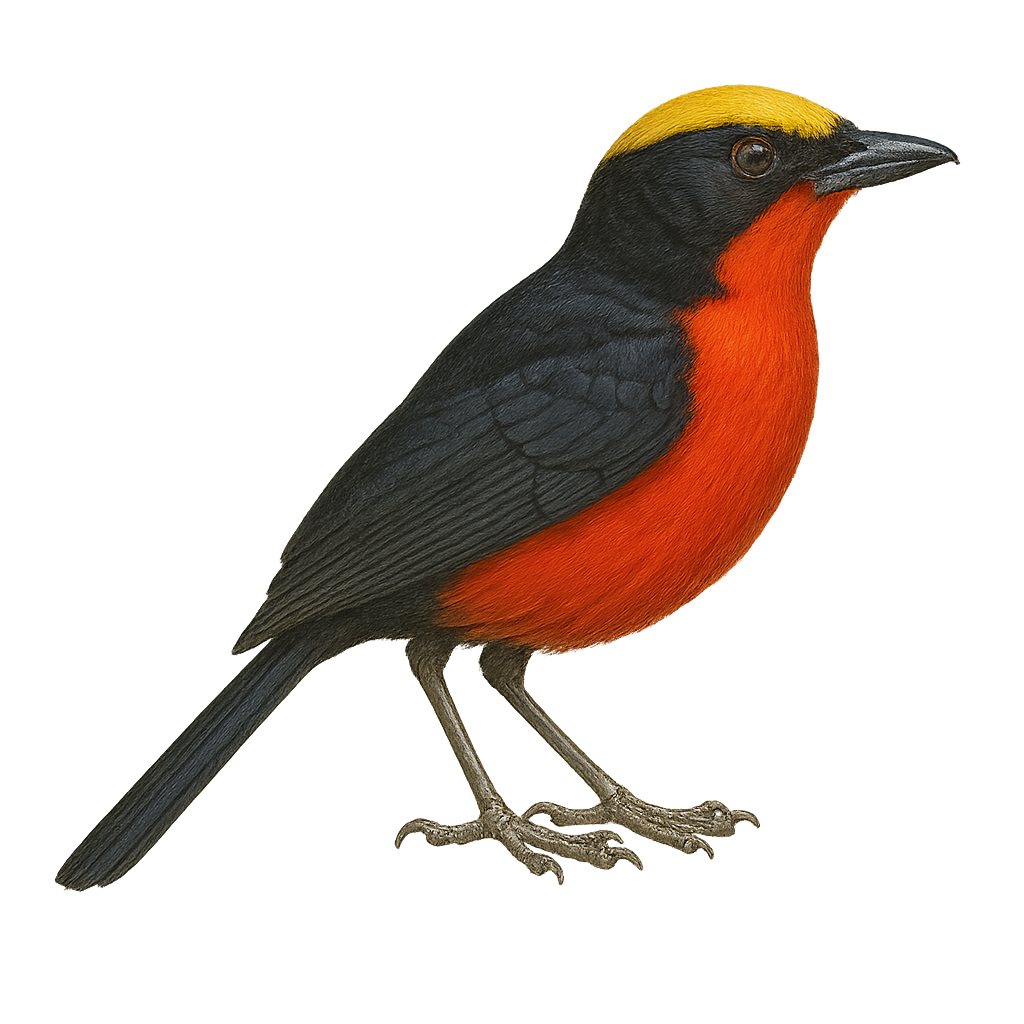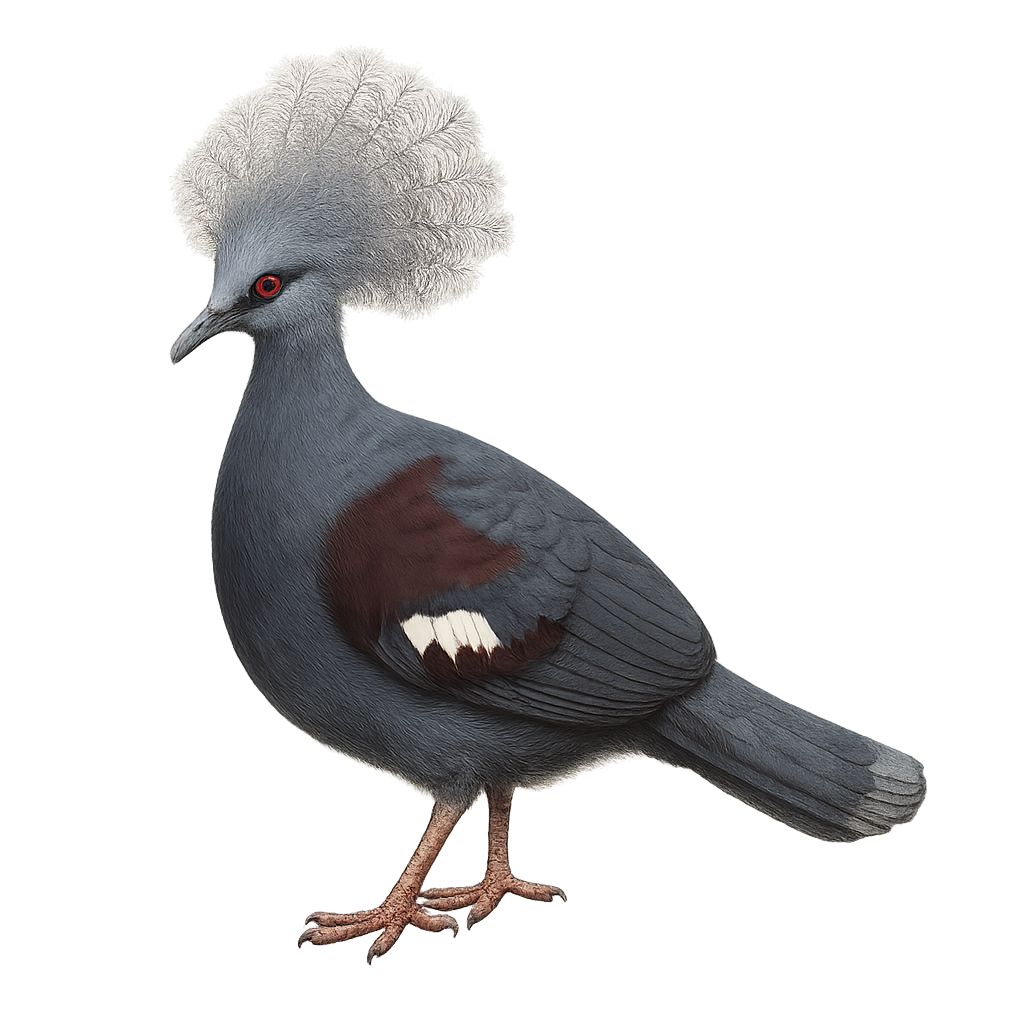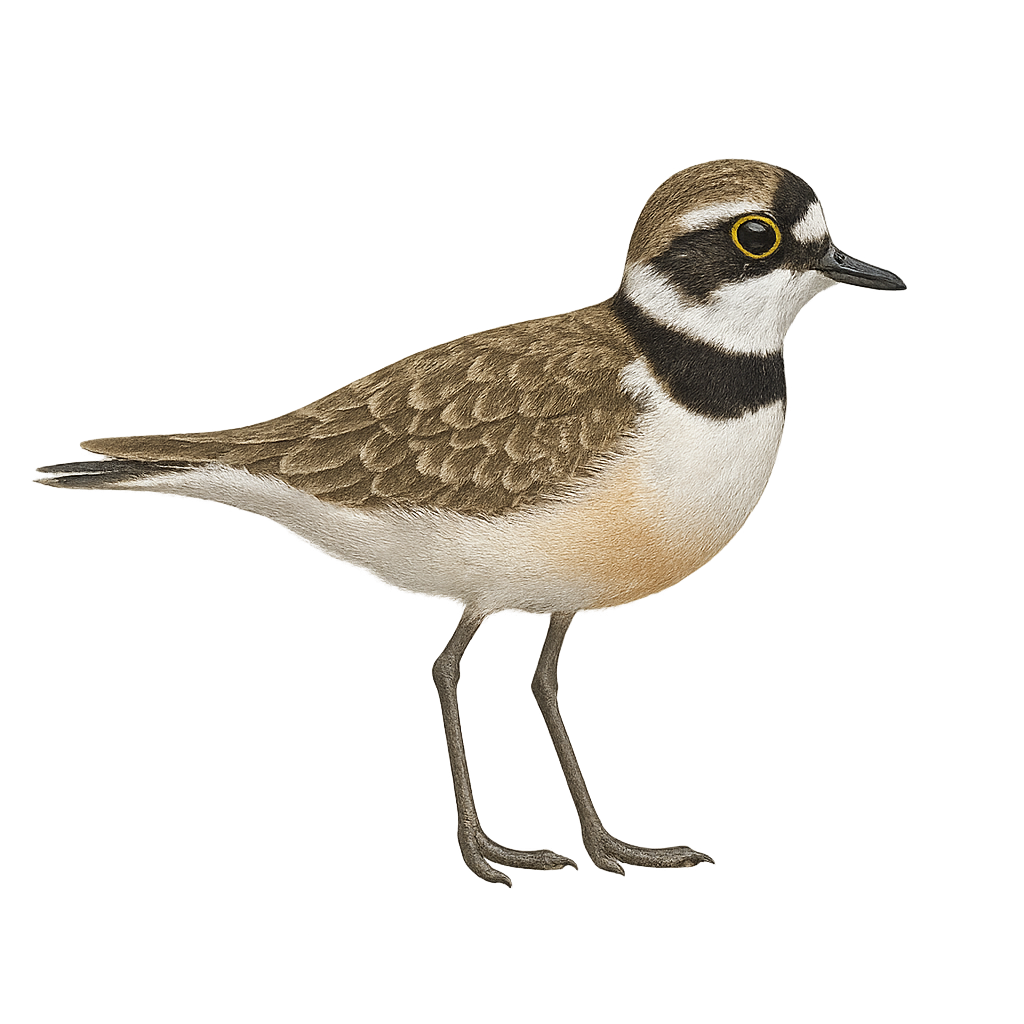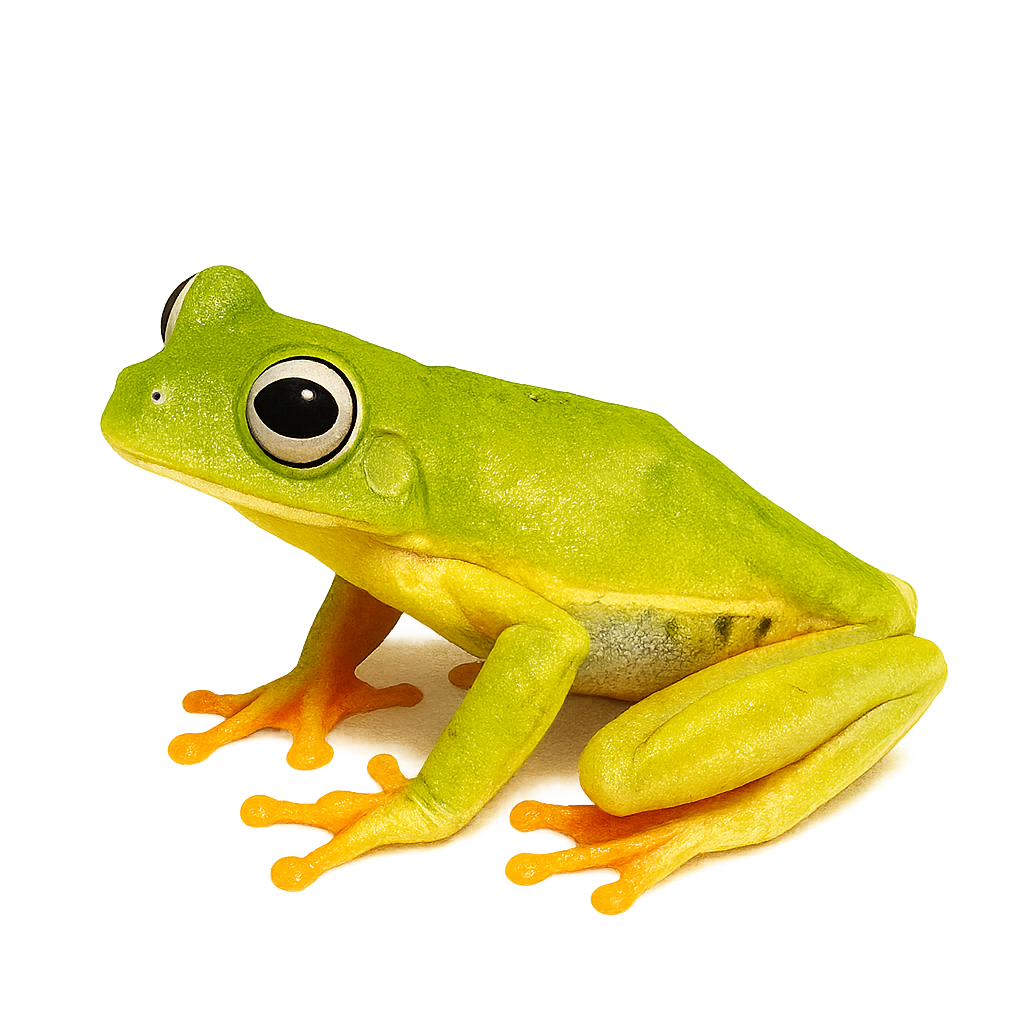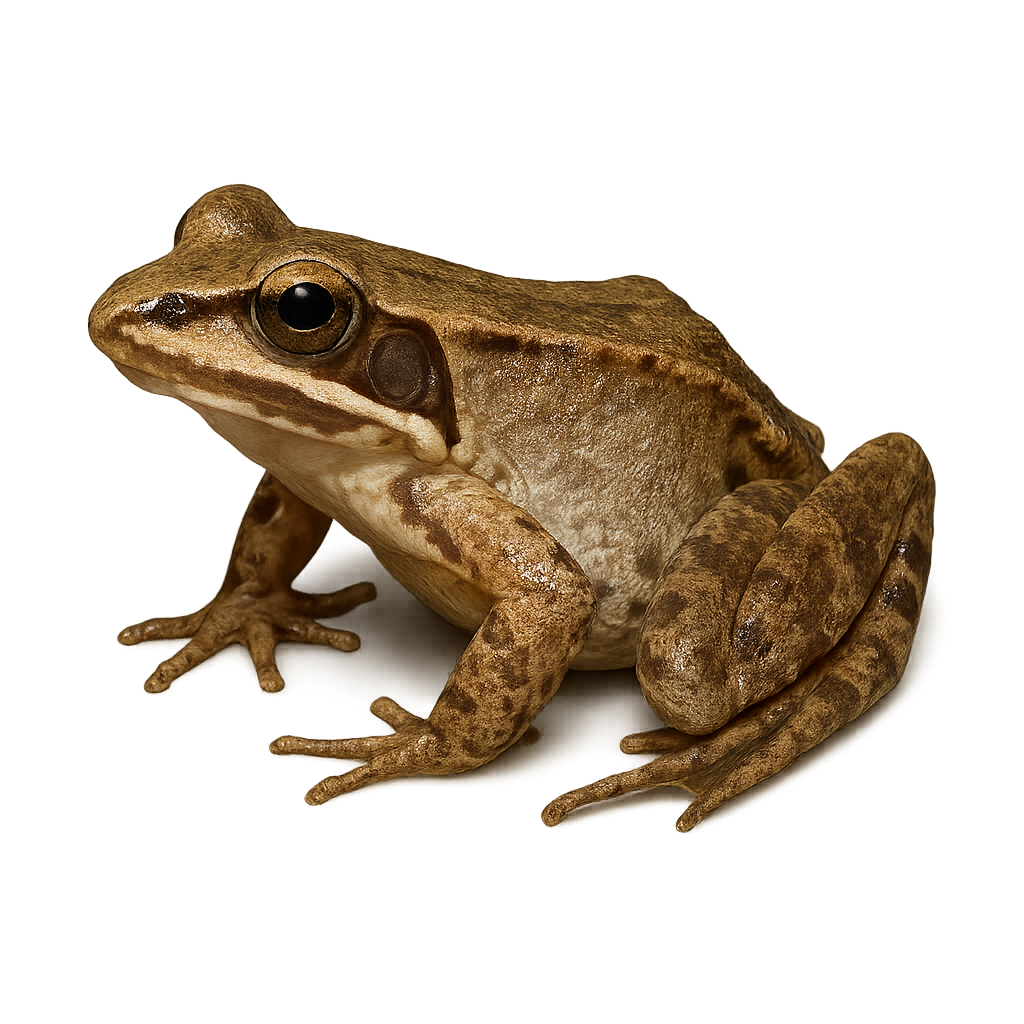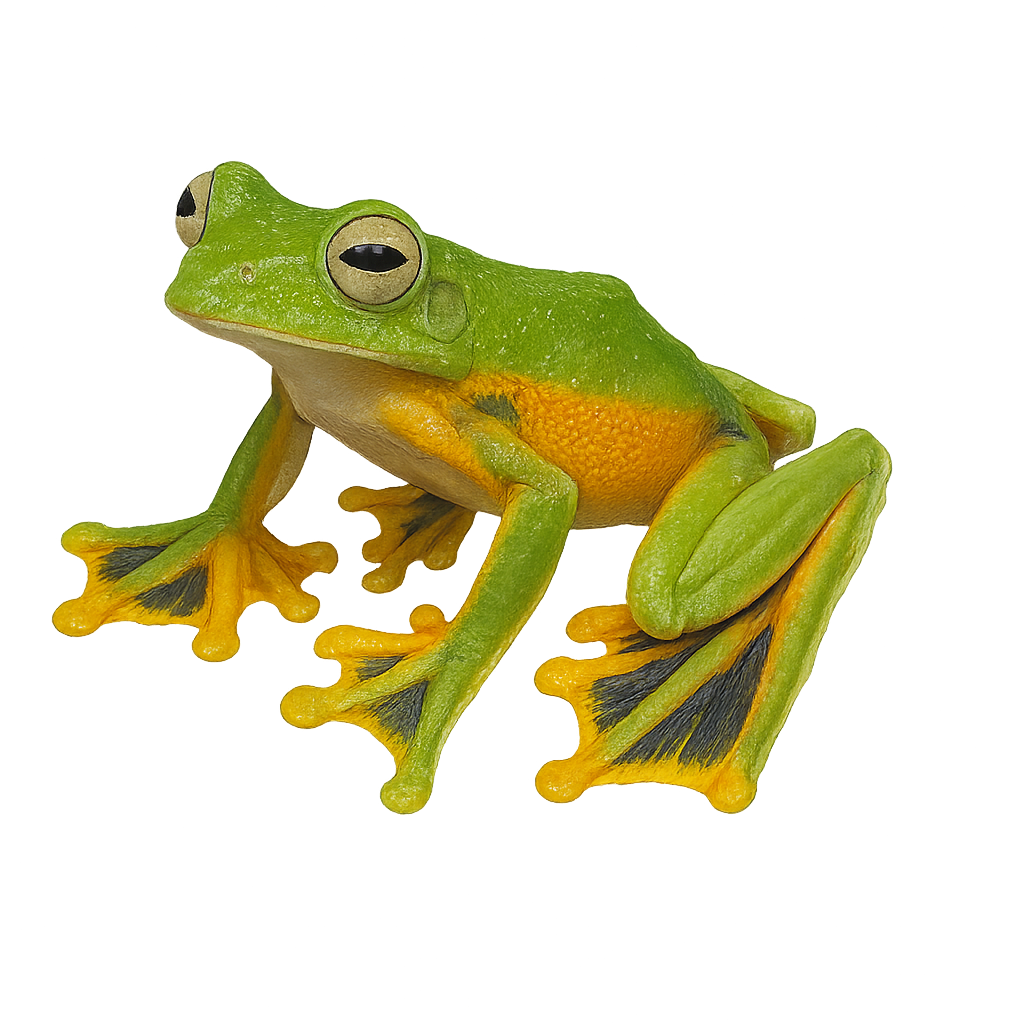The White-eared Parakeet, or Pyrrhura leucotis, is a small, colorful parrot native to the forests of southeastern Brazil. It is distinguished by its bright green feathers, characteristic white ear patches, and reddish tail. Measuring about 22 cm in length, it is known for its social behavior and ability to form noisy flocks. It primarily feeds on fruits, seeds, and flowers. Although its natural habitat is threatened by deforestation, it adapts well to human-modified environments. This species is often seen in captivity due to its sociable nature and attractive plumage.
The White-necked Raven is a large bird, easily identifiable by its glossy black plumage and distinctive white neck. It primarily inhabits mountainous regions and plateaus in southern Africa. Known for its remarkable intelligence, it uses tools to feed and is adept at solving complex problems. Its diet is varied, including insects, small animals, and carrion. Often found in groups, it is renowned for its varied vocalizations. Its presence is typically associated with open, rocky landscapes where it can easily find food and nesting sites.
The Centropus superciliosus, or White-browed Coucal, is a bird from the Cuculidae family, widely distributed in sub-Saharan Africa. It is recognizable by its distinctive white eyebrows contrasting with its brown and black plumage. This bird prefers dense habitats such as wooded savannas, marshes, and riparian forests. It is primarily terrestrial, often moving on foot in search of prey like insects, small reptiles, and amphibians. The White-browed Coucal is known for its distinctive call, a deep, resonant "bouhou". Although relatively common, it remains discreet and difficult to observe due to its suspicious behavior.
The Western Whip Snake is a slender snake that can reach up to 1.60 m in length. Its coloration is dark, black or dark green, speckled with yellow spots forming transverse bars at the front of the body and longitudinal lines towards the rear. The belly is light, yellow or greenish-white. Juveniles have a more uniform grayish to beige hue with distinctive head patterns. It inhabits dry and sunny environments, such as hedgerows, fallow lands, forest edges, and rocky areas, from plains up to 1900 m altitude. Diurnal and agile, it primarily feeds on small vertebrates: rodents, lizards, amphibians, and sometimes other snakes. Reproduction occurs in spring, with 5 to 15 eggs laid in June-July, incubated for 6 to 8 weeks. Protected species in Europe, it is vulnerable to habitat destruction and road traffic.
The Whimbrel is a medium-sized wader, easily recognized by its long, finely curved bill and its brown-gray plumage with lighter speckling on the belly. It measures about 40 to 50 cm in length and has a wingspan of about 70 to 85 cm. Unlike the Eurasian Curlew, it is more subtle in its behavior and colors, making it a bird that is often less visible despite its size.
This wader primarily inhabits coastal areas, estuaries, and mudflats, where it primarily feeds on small invertebrates, worms, and mollusks, which it captures from sandy or muddy soils at low tide. During migration, the Whimbrel can travel long distances, moving from its breeding grounds in Northern Europe to the coasts of West Africa. While it is considered a species of concern in some areas, it is primarily threatened by habitat loss and human disturbance.
The Whooper Swan, also known by the scientific name Cygnus cygnus, is a large species of swan that can reach a wingspan of 2 to 2.5 meters, making it one of the largest swans in Europe and Asia. Its plumage is entirely white, except for the bright orange skin covering its bill. The Whooper Swan is primarily a migratory bird that lives in wetlands, lakes, and marshes. It feeds mainly on aquatic plants, but can also consume seeds and roots. During the breeding season, the Whooper Swan prefers freshwater lakes and ponds, where it builds floating nests. The migration of the Whooper Swan is particularly notable, as it travels long distances between its breeding grounds in Northern Europe and its wintering areas in Western Europe, Central Asia, and China. While its status is currently stable, the Whooper Swan can be threatened by habitat loss due to the draining of wetlands and water pollution. It is also vulnerable to illegal hunting and human disturbances.
The White-bellied Dacnis is a small, colorful bird belonging to the Thraupidae family. It is primarily found in the tropical rainforests of South America, particularly in Venezuela, Colombia, and Brazil. This passerine is distinguished by its striking plumage: males display a bright blue with a white belly, while females have more subdued shades of green and blue. The White-bellied Dacnis is a diurnal bird, active mainly during the day, feeding on fruits, nectar, and insects. It is often seen in small groups, sometimes in the company of other bird species. Although its habitat is threatened by deforestation, it is currently classified as "least concern" by the IUCN.
The White-beaked Dolphin is a small cetacean from the Delphinidae family, easily recognizable by its white beak and distinctive markings on its body. It typically measures between 1.5 and 2.5 meters in length and weighs between 70 and 150 kg. This dolphin primarily inhabits the cold and temperate waters of the North Atlantic, particularly around Iceland, Greenland, and the North American coasts. It primarily feeds on fish and cephalopods, using group hunting techniques to capture its prey. The White-beaked Dolphin is often seen in small groups or families, and it is known for its complex social behaviors, including group play and acrobatic leaps. This dolphin has a lifespan of about 20 to 30 years in the wild. Although the species is not currently endangered, it faces threats from pollution, underwater noise, and ship collisions. Managing its marine habitats is crucial for the preservation of this species.
The White-faced Whistling Duck is a medium-sized waterfowl known for its distinctive plumage. Its white face contrasts with its dark brown body and long neck. Often seen in large flocks, it emits characteristic whistles. Native to sub-Saharan Africa and South America, it inhabits wetlands, lakes, and marshes. This duck is primarily nocturnal and crepuscular, feeding on seeds, aquatic plants, and insects. Although sociable, it can be wary of humans. Its population is stable, but it is sensitive to environmental changes and habitat degradation.
The Western Long-beaked Echidna, or Zaglossus bruijni, is a fascinating mammal native to New Guinea. It is distinguished by its long snout and dorsal spines, similar to those of a hedgehog. This animal is a monotreme, meaning it lays eggs while being a mammal. It primarily feeds on earthworms and insects, which it finds using its sensitive snout. The Western Long-beaked Echidna is a solitary and discreet animal, living in dense forests and mountainous regions. Unfortunately, it is threatened by habitat loss and hunting, making it critically endangered according to the IUCN.
The White-crested Elaenia is a small passerine bird belonging to the Tyrannidae family. It is recognizable by its distinctive white crest on the head, contrasting with its gray-green plumage. This bird is widely distributed in South America, inhabiting various environments from tropical forests to shrublands. Known for its melodious voice and varied songs, the elaenia primarily feeds on insects and fruits, which it captures in flight or by foraging through foliage. It is often observed in small groups or pairs, especially during the breeding season. Its adaptability to different environments makes it a resilient species, although some populations may be affected by deforestation.
The white-headed duck is a small diving duck, 40–45 cm long, with males displaying a white head, slate-grey body and bright blue bill, while females have a brownish head and darker bill. It inhabits freshwater lakes and ponds fringed by dense emergent vegetation, diving to feed mainly on aquatic plants and small invertebrates. Shy and solitary, it typically swims away under water when threatened rather than flying.
The White-cheeked Starling is a medium-sized bird, measuring about 24 cm in length. It is easily recognizable by its ash-gray plumage, white cheeks, and bright yellow beak. This bird is mainly found in East Asia, particularly in China, Japan, and Korea. It frequents urban areas, parks, and gardens, as well as forests and agricultural zones. The White-cheeked Starling is a social bird, often seen in groups. It primarily feeds on insects, fruits, and seeds. Its song is varied and melodious, making it a favorite among birdwatchers.
The White-crested Laughingthrush is a sociable and noisy bird, often seen in groups in the dense forests of Southeast Asia. It is distinguished by its striking white crest contrasting with its brown and black plumage. This bird measures about 28 to 30 cm in length and has a sturdy beak suited to its omnivorous diet. It primarily feeds on insects, fruits, and seeds. Its call is a mix of laughs and cries, making it easily identifiable. The White-crested Laughingthrush is a resilient bird that adapts well to environmental changes, although it is sometimes threatened by deforestation.
The Cyanocorax affinis, or White-throated Magpie-Jay, is a striking bird known for its vivid blue plumage and distinctive white face with a black crest. It is primarily found in Central America, particularly in Costa Rica and Panama. This social bird lives in family groups and is noted for its intelligence and ability to mimic sounds. It inhabits tropical dry and humid forests, forest edges, and cultivated areas. The White-throated Magpie-Jay is omnivorous, feeding on fruits, insects, and occasionally small vertebrates. Its curious behavior and adaptability to human-altered environments make it a fascinating species to observe. Although not currently threatened, deforestation could impact its populations in the long term.
The White-throated Magpie-Jay, Cyanocorax formosus, is a striking bird with a long tail and vibrant blue plumage contrasting with a black face. It primarily inhabits dry tropical forests and wooded areas in Mexico and Central America. This sociable bird lives in family groups and feeds mainly on insects, fruits, and seeds. Its distinctive and varied call is often heard before it is seen. Although its habitat is threatened by deforestation, it remains relatively common within its range. The White-throated Magpie-Jay is a fascinating example of the avian diversity of the Neotropical region.
The Hazel Grouse is a small, terrestrial bird belonging to the pheasant family, easily recognizable by its subtly colored plumage and robust build. It measures about 40 to 45 cm in length and weighs between 500 and 700 g. Its plumage is primarily brown and gray, with patterns of spots and bars that allow it to blend effectively into the dense vegetation of forests. The Hazel Grouse primarily inhabits dense deciduous and mixed forests, where it feeds on seeds, berries, young shoots, and insects. Although it is rather discreet and difficult to spot, it is often heard through its soft, deep call. The Hazel Grouse is a fairly sedentary bird, but it may migrate short distances depending on weather conditions. It is also an emblematic bird of wooded areas and forest landscapes. While it is not endangered, the Hazel Grouse may be threatened by the loss of its forest habitat and the degradation of its breeding sites.
The Wolverine is a robust and solitary carnivore, often compared to a small bear due to its size and strength. It measures about 65 to 87 cm in length, with a tail measuring 30 to 40 cm, and weighs between 10 and 30 kg. Its fur is typically dark brown, with lighter markings on the legs and throat, forming a distinctive "mask" around its face. The Wolverine has powerful musculature, allowing it to capture prey much larger than itself, such as deer or reindeer, although it primarily feeds on small mammals, insects, and carcasses. It is an opportunist, capable of stealing food from other predators such as wolves or bears. The Wolverine primarily inhabits the northern forests of Asia and North America, including Scandinavia, Russia, Canada, and Alaska. It is an excellent climber and swimmer, well-adapted to cold, snowy environments. Although its population remains relatively stable in some areas, the Wolverine faces threats related to habitat loss, climate change, and human persecution.
The Laniarius barbarus, commonly known as the West African Boubou, is a bird with distinctive plumage, featuring a bright yellow breast contrasting with a black back. It is primarily found in West Africa, inhabiting savannas, open forests, and shrublands. This bird is known for its melodious song and harmonious duets with its partner. It primarily feeds on insects but can also consume fruits. The West African Boubou is a territorial bird, often seen alone or in pairs. Its ability to blend into its environment sometimes makes it difficult to spot, despite its vibrant colors.
The Western Lowland Gorilla, Gorilla gorilla gorilla, is the smallest of the gorilla subspecies, yet remains an imposing primate. It primarily inhabits the dense tropical forests of Central Africa, notably in Cameroon, the Republic of the Congo, and the Central African Republic. This gorilla is recognizable by its brownish-gray fur, with a lighter shade on the backs of adult males, often referred to as "silverbacks." Western Lowland Gorillas live in family groups led by a dominant male. They are primarily herbivorous, feeding on leaves, fruits, and stems. Although their behavior is generally peaceful, they can become aggressive to protect their group.
The Western Gorilla is a large primate species, closely related to its cousin the mountain gorilla. It is slightly smaller, with an average size of 1.6 to 1.8 meters for males and 1.4 to 1.6 meters for females, weighing between 140 and 200 kg for males and 70 to 120 kg for females. Its fur is generally black, with lighter hair on the back of adult males, who are referred to as "silverbacks" due to the silver color of their back fur. Western Gorillas primarily inhabit the tropical forests of West and Central Africa, notably in Cameroon, the Republic of Congo, the Central African Republic, and Guinea. They feed mainly on plants, fruits, leaves, and stems, and they are predominantly herbivores. Western Gorillas live in social groups led by a dominant male, and they are known for their calm and peaceful behavior. While they are not as endangered as mountain gorillas, Western Gorillas are still at risk due to habitat loss, poaching, and disease.
The Western Crowned Pigeon, or Goura cristata, is a majestic bird native to the forests of New Guinea. This large pigeon is easily recognizable by its delicate feathered crest and striking blue-grey plumage. It measures about 70 cm in length and can weigh up to 2.5 kg. Its elegant appearance and graceful gait make it a fascinating sight in its natural habitat. The Western Crowned Pigeon is a social bird that lives in small groups and primarily feeds on fruits, seeds, and insects. Although its flight is powerful, it prefers to walk on the ground in search of food. Unfortunately, this species is threatened by deforestation and hunting.
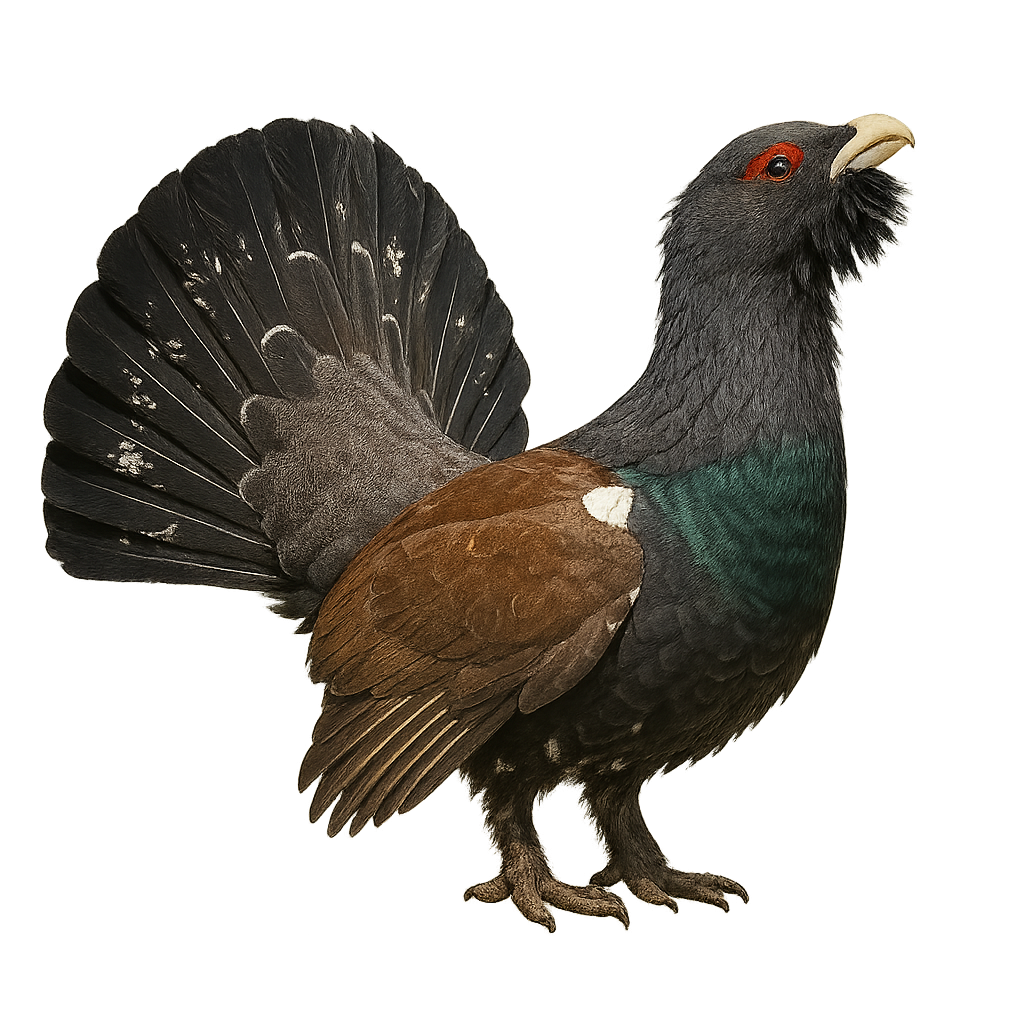
The Capercaillie is a large bird of the pheasant family, easily recognizable by its imposing size and distinctive plumage. It measures about 80 cm in length, with a wingspan of 1.2 meters and a weight ranging from 3 to 6 kg for males and 2 to 3 kg for females. The male's plumage is dark, with a reddish chest, a crest of feathers on the head, and a large V-shaped tail. The female, on the other hand, is more discreet, with a brown mottled plumage that allows her to better blend into the environment. The Capercaillie primarily inhabits coniferous and deciduous forests, particularly in the mountains and wooded areas of Europe, notably in France, Switzerland, Germany, and other mountainous regions. It feeds mainly on young shoots, seeds, fruits, and insects. This bird is also known for its spectacular mating displays, during which the male puffs up his chest, spreads his tail, and makes powerful calls to attract females. Although the species is not immediately endangered, the Capercaillie faces threats from deforestation, human disturbance, and habitat loss.
The Wrybill, or Anarhynchus thoracicus, is an endemic bird of New Zealand, known for its uniquely right-curved bill. This small wader measures about 20 cm in length and weighs between 40 and 60 grams. Its plumage is mainly grey with a white belly and a distinctive black band across the chest. It frequents rivers and estuaries, feeding primarily on insects and small invertebrates. Its ability to move quickly over pebbles and use its bill to probe under stones is remarkable. Unfortunately, this species is threatened by habitat loss and predation by introduced species.
The Wrybill, Anarhynchus nivosus, is a unique bird species primarily endemic to New Zealand. This small shorebird is easily recognizable by its distinctively right-curved bill, a rare adaptation in the avian world. It mainly inhabits gravel riverbeds and estuaries, where it feeds on invertebrates. Its subtle coloration, with grey and white plumage, allows it to blend into its surroundings, providing protection from predators. The Wrybill is a migratory bird, moving to coastal areas in winter. Although its population is stable, it is considered vulnerable due to habitat loss and human disturbances.
The White-edged Tree Frog, Boana albomarginata, is a species of tree frog found mainly in the humid tropical forests of South America. It is recognizable by its bright green coloration and distinctive white edges along its limbs and body. This species is generally active at night, feeding on insects and other small invertebrates. It prefers habitats near water bodies, where it can easily reproduce. Males call to attract females during the rainy season. Although this species is not currently threatened, deforestation and habitat loss pose potential risks to its population.
The wood frog, Lithobates sylvaticus, is a fascinating species belonging to the Ranidae family. It is easily recognizable by its brownish to reddish coloration and the dark band that runs across its eyes. This frog is particularly remarkable for its ability to survive in cold environments, notably due to its freeze tolerance. In winter, it enters a state of partial freezing, where up to 65% of its body water can turn into ice. It primarily inhabits moist forests, swamps, and wooded areas near ponds and streams. Its breeding period often coincides with the melting of snow, when temperatures begin to warm up.
Wallace's Flying Frog is a remarkable amphibian species, famous for its ability to glide from tree to tree. This frog, with long and flexible limbs, has wide feet with membranes that allow it to stabilize itself in flight. It primarily lives in the humid tropical forests of Malaysia, Indonesia, and Borneo. It feeds on insects while suspended in the branches of trees. During the breeding season, it moves to ponds or streams to lay its eggs. Wallace's Flying Frog is also nocturnal and uses its flight to escape predators.
The White-flanked Antwren, Herpsilochmus axillaris, is a small bird belonging to the Thamnophilidae family. It is primarily found in lowland tropical rainforests in South America, particularly in Peru, Colombia, and Ecuador. This bird is characterized by its subtle plumage, with white flanks contrasting against its grey body. Often seen in pairs or small groups, it actively moves through foliage in search of insects. Although it is relatively tolerant, it can be challenging to spot due to its dense habitat. Its presence is an indicator of the health of the forest ecosystems it inhabits.
The Wood Thrush, or Hylocichla mustelina, is a medium-sized bird known for its reddish-brown back and white belly speckled with black. It is often found in deciduous forests of North America, feeding mainly on insects and fruits. Its melodious song is highly appreciated and adds to the woodland symphony. The Wood Thrush is migratory, spending winters in Central America. It is known for its ability to navigate long distances using geographical and magnetic cues. Although its habitat is threatened by deforestation, it remains relatively common.


